Whether or not “Peasant Bruegel”, the nickname of Pieter Bruegel the Elder (1525-1569), was a peasant himself or whether he simply romanticized peasant life remains unknown.
What we do know is that this Renaissance artist loved to depict the common man as he was. This gives us a remarkable view of working-class life in the 16th century.
In this article, we take a closer look at some of the most interesting facts about The Peasant Wedding by Pieter Bruegel the Elder, one of the artist’s most distinctive paintings.
1. It was completed during the final years of the artist’s life
Pieter Bruegel the Elder was born between 1525 and 1530 (the exact date is unknown) in or around the city of Breda. He can therefore be referred to as a Dutch artist.
He did, however, spend several years traveling to Italy in the early 1550s where he studied the artworks of Italian artists.
He returned to the northern part of Europe and settled in Antwerp in 1555, a major port city in modern-day Belgium. Here he started working as an illustrator for a local publishing company named “Cock”.
He gradually gave more importance to his paintings and produced many of his most famous works during the late 1550s and 1560s.
The Peasant Wedding was completed in 1567, just 2 years before the artist passed away in 1569.
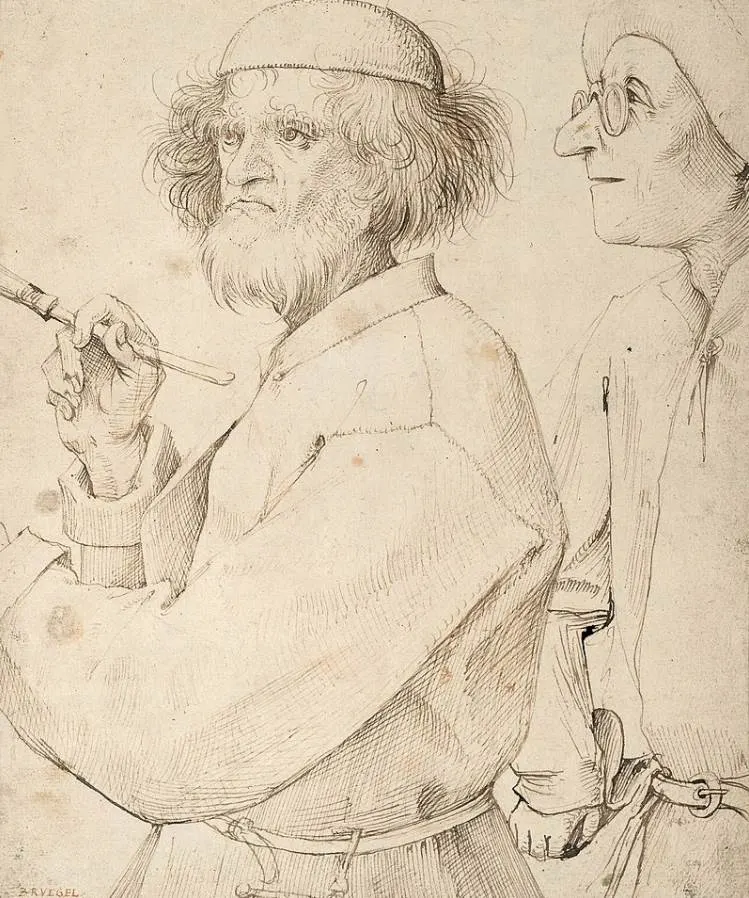
2. It’s a genre painting that depicts a common wedding of lower-class people
Pieter Bruegel the Elder was certainly an educated man. He often included symbols in his works that could only be recognized by educated people at the time.

He didn’t, however, know Latin because he required other people to add Latin text to his paintings.
Does this mean he had a peasant background? This remains up for debate, but he certainly was familiar with peasant life or had a deep respect for hardworking people in the fields.
He was one of the only artists who prominently depicted peasants at the time. This type of genre painting inspired many generations of artists of the future, especially during the Dutch Golden Age.
As the name of this painting suggests, it depicts a wedding party of common people in the 16th century.
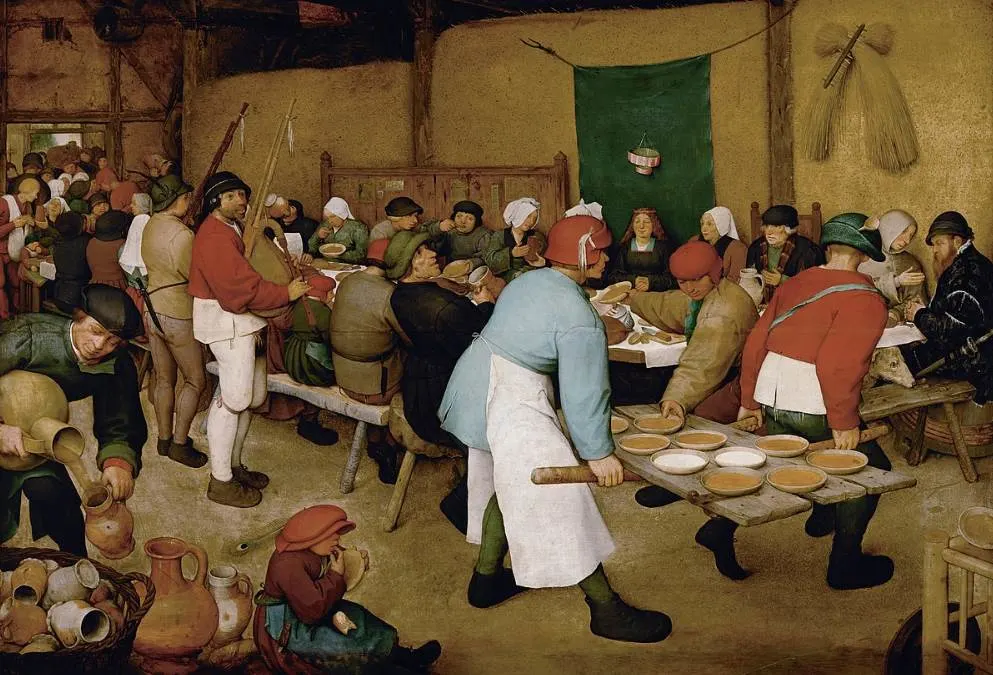
3. The event takes place in a barn during the harvesting season
Peasant-Bruegel is the nickname of the artist and he left several clues to identify the event as a wedding of peasants.
The wedding takes place in a barn and there are two sheaves of hay hanging on the wall which are accompanied by rakes.
These elements are references to the fact that the wedding takes place in the summer during the harvesting season.
While most people enjoy bread, porridge, and soup that is being served, we can also identify a wealthy man sitting in the utmost right part of the painting.
Bruegel painted him right below the rake and sheaves of hay while he is talking to a Franciscan monk. Both the monk and the rich man never used such a tool in their lives.
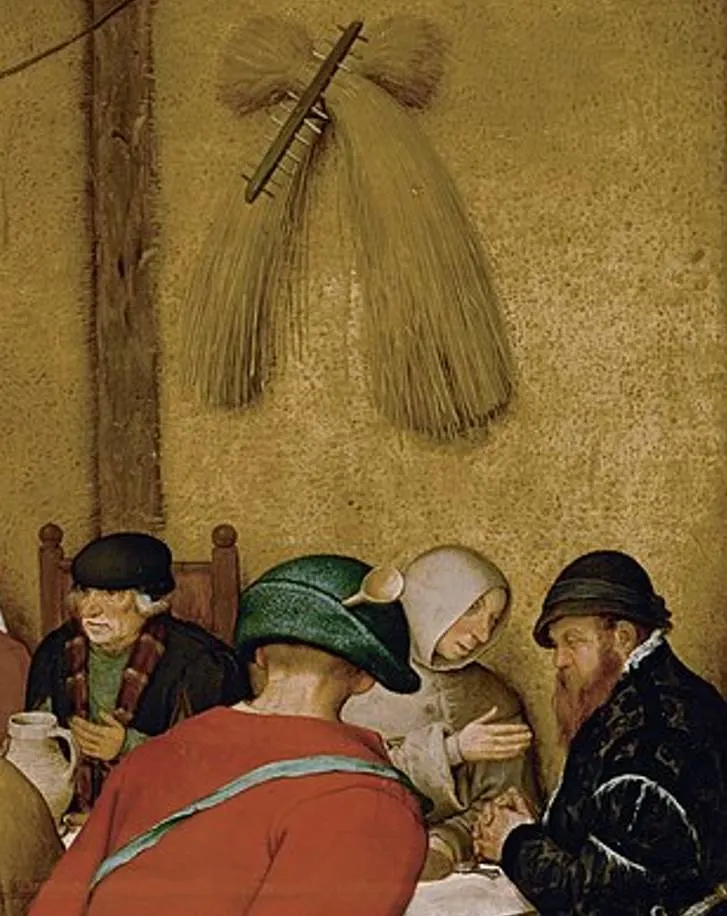
4. The bride has a prominent position which makes it easy to identify her
The wall is dominated by a large green blanket. A paper crown hangs here too so we can easily identify the bride as the woman sitting right below it.
The bride wears a crown herself and looks to be at peace and relatively happy during the event, while the people around her are talking, eating, and drinking.
As this is going on, two men with bagpipes are playing music, so we can only assume that this is a pretty noisy place.
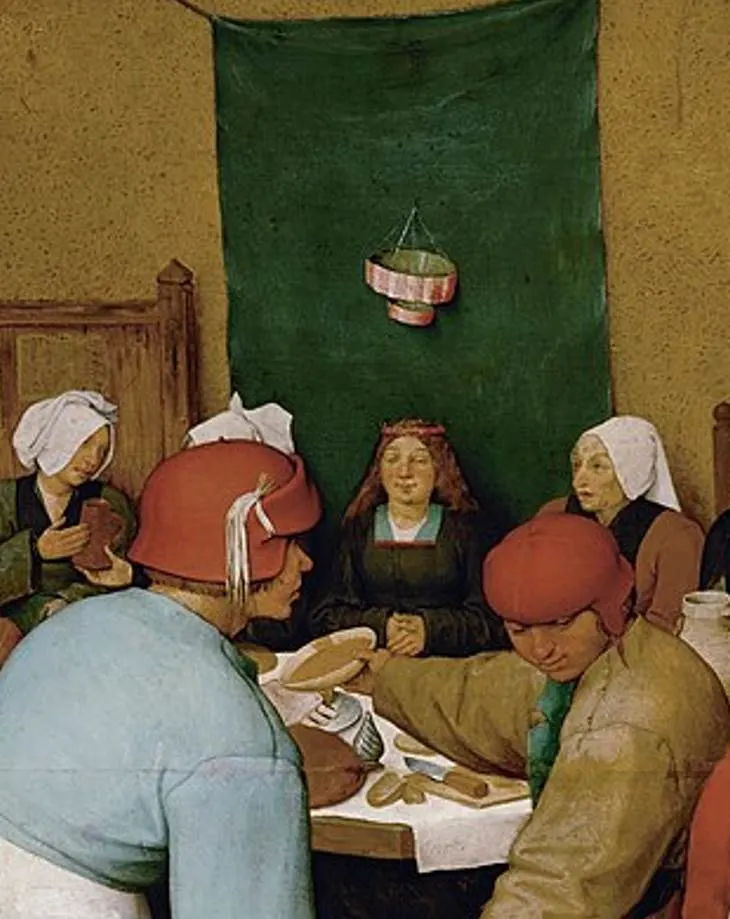
5. The identity of the groom is unknown and some sources claim he’s not even in it
The bride is accompanied by several women who sit right next to her. There appears to be no way to identify the groom.
This has led to several discussions and many suggestions being made by art historians as to who the groom in the painting is.
Could it be the man pouring beer in the foreground? Or one of the other men sitting at the table?
Nothing suggests that any of these men is the groom, which makes the theory that the groom isn’t included in the work very plausible.
If that’s the case, Pieter Bruegel the Elder might have hinted at this Flemish proverb:
It is a poor man who is not able to be at his own wedding.
The artist completed a painting depicting several Flemish provers in 1559 titled “Netherlandish Proverbs.”
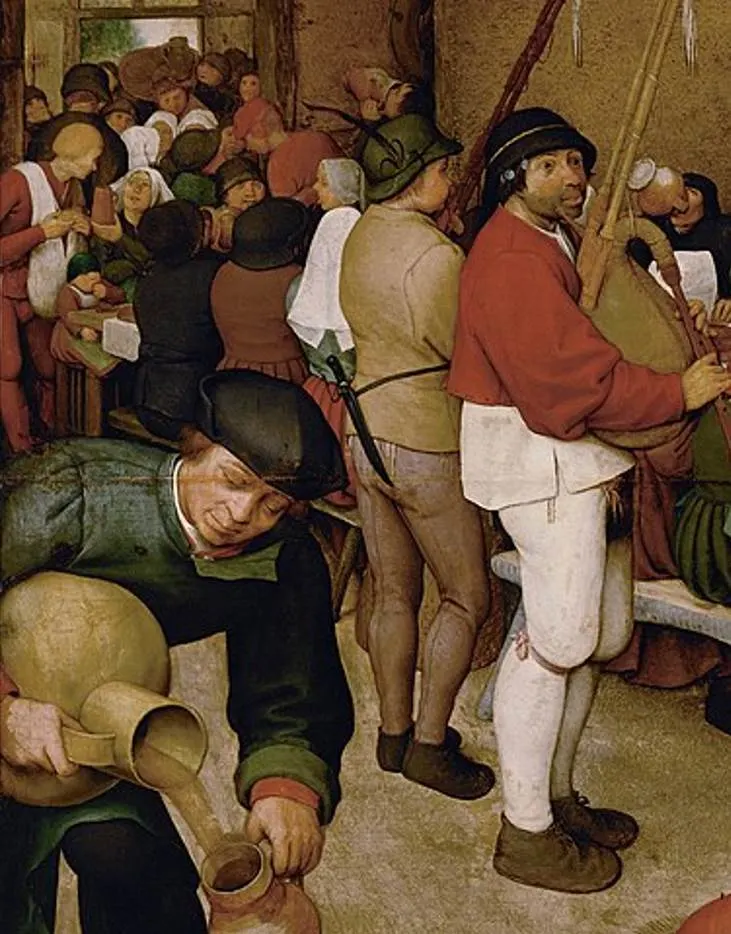
6. The mystery of the servant’s third foot isn’t a mystery at all
A lot is going on in the painting and there doesn’t seem to be a lot of symbolic elements as in other paintings by Pieter Bruegel the Elder.
There is one peculiarity that even his son, Flemish artist Pieter Brueghel the Younger (1564-1638), couldn’t comprehend.
The man wearing a red shirt who is serving food appears to have three feet. Bruegel the Younger believed this was his father’s mistake and simply excluded it from his copy of the painting.

When art historian Claudine Majzels analyzed this section of the painting, she came to the conclusion that it was neither a mistake nor a joke by the artist.
Although it’s hard to judge at first glance, this is the right foot of the man wearing a red cap who is passing food to the table. He is in a semi-crouching position and his right foot is slightly lifted.
This all makes sense if you imagine that his left knee is being forward.
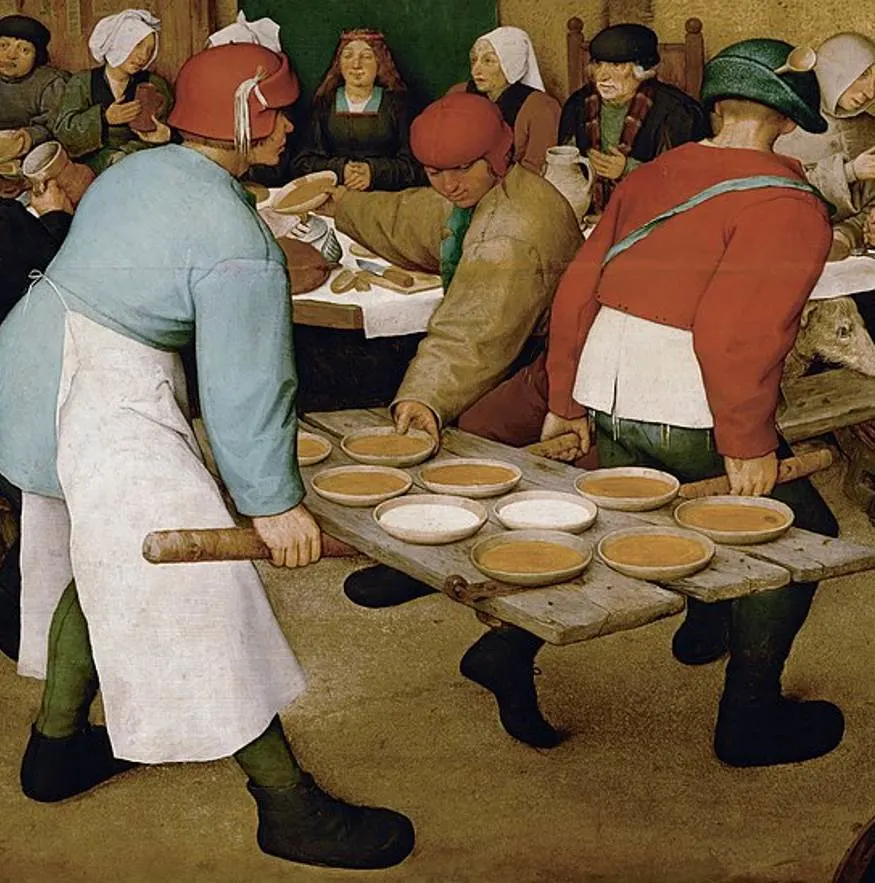
7. How big is The Peasant Wedding by Pieter Bruegel the Elder?
The artist started his career as an illustrator, although he was certainly trained as a painter. He didn’t produce monumental works of art but mainly focused on the details.
The Peasant Wedding by Pieter Bruegel the Elder is a medium-sized oil on canvas painting that has dimensions of 114 × 164 centimeters (45 × 65 inches).
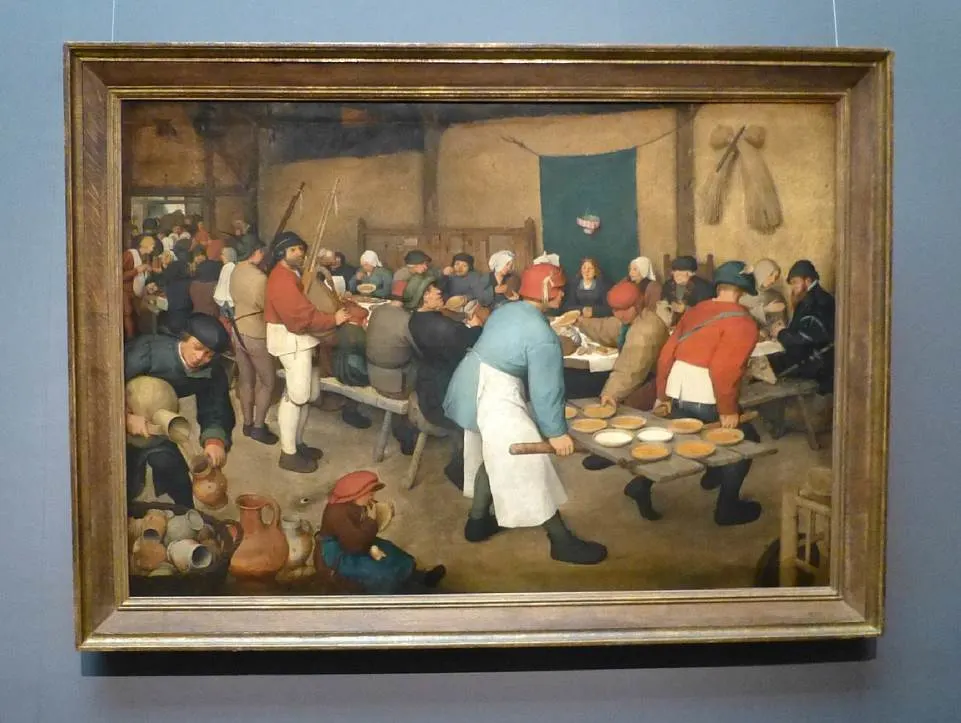
8. Where is the painting located today?
Because of the unique content of Bruegel’s paintings, especially those depicting peasants doing common things, his works became collector items among aristocrats.
Several of his paintings were acquired by Holy Roman emperor Rudolf II and eventually ended up in the collection of the Habsburg rulers.
From here, they were included in the collection of the Kunsthistorishes Museum in Vienna. This museum in Austria’s capital was established in 1891.
It houses several works by this remarkable artist, including “The Tower of Babel” (1563), “Children’s Games” (1560), and “The Hunters in the Snow” (1565) which is part of the seasons series.

